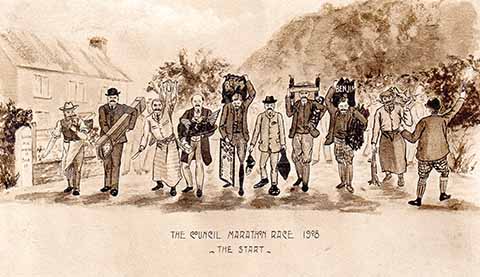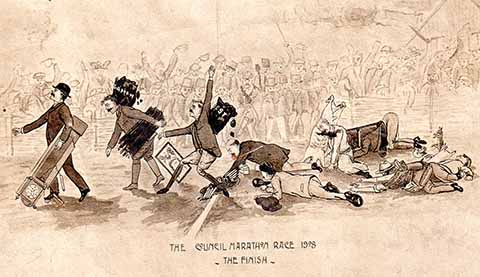A race to the finish
Roger Guttridge recalls a memorable Blandford Town Council election in 1908
Published in May ’19
 As the creaking wheels of British democracy grind towards the elections for the Dorset and Bournemouth-Christchurch-Poole councils, I have elected to cast my vote back to Edwardian times. I wonder what the brand new local authorities would give for a turn-out of 88.4 per cent. Such was the level of interest generated when four seats on Blandford Town Council came up for grabs in 1908.
As the creaking wheels of British democracy grind towards the elections for the Dorset and Bournemouth-Christchurch-Poole councils, I have elected to cast my vote back to Edwardian times. I wonder what the brand new local authorities would give for a turn-out of 88.4 per cent. Such was the level of interest generated when four seats on Blandford Town Council came up for grabs in 1908.
No women could vote then, of course, but of the 718 men on the electoral role, no less than 635 voted – a record turnout. ‘A considerable amount of interest was taken in the fight for the seats and it is doubtful if more excitement has been awakened in any local context of recent years,’ reported the Dorset County Chronicle.
That excitement was reflected in two rather clever cartoons that were published as postcards. The first, entitled ‘The Council Marathon Race 1908 – The Start’, shows the nine candidates lined up as if for a running race and identifiable by their clothes, physical appearance and items relating to their respective trades. The second cartoon, published after the election, depicts a large crowd cheering and waving as the candidates cross the finish line or fall short.
First over, striding proudly and purposefully forward, is George Dyke, who topped the poll with 346 votes. Under his arm is a grandfather clock – a humorous reference to his occupation as recorded in Kelly’s Directory of 1907: watchmaker.
Behind Dyke is George E Gould, who polled 330 votes and is pictured carrying a bundle of faggots and a sack of coal bearing part of the name ‘Benjamin’. This refers to Benjamin and Co of Oakfield Street, ‘coal and coke factors, corn, cake and forage merchants and cartage contractors’, for whom Gould was the office manager.
‘Messrs Dyke and Gould have again been the recipients of the confidence of the burgesses, on whose behalf they have worked well on the Council and certainly deserve the support accorded them for the manner in which they have watched the interests of the town and ratepayers generally,’ reported the Chronicle.
Coal merchant George Best, who polled 277 votes, crosses the line third, lumps of coal spilling from the sack on his back. ‘Mr Best is new to municipal life, and received the hearty support of the friendly societies with which he has been closely identified,’ said the paper. Unlike some of his rivals, Best had ‘issued no direct manifesto, simply asking for the votes and interest of the ratepayers’ and promising to ‘take each question on its merits’.
Throwing himself across the line like a batsman trying to avoid a run-out is Alfred Cherry, the Salisbury Street draper, who scraped home by just five votes with 260. Cherry, woman’s hat in hand, was also a new member and did not enjoy the popularity of some of his rivals. When the Mayor, Alderman John Barnes, declared the result to an ‘exceptionally large crowd in the Market Place’, Cherry was ‘not granted quite as courteous a reception as the other successful candidates’. The draper had run as a ‘non-political and non-sectarian candidate, and his knowledge of local affairs, spread over a course of many years as a prominent tradesman, will no doubt qualify him as a very useful member of the Corporation’.
Bootmaker Louis Bunce, who lost his seat by five votes, is depicted not quite making it over the line. The remaining candidates are shown in various states of collapse, among them butcher Edwin Horsey (212 votes), complete with animal carcase, and furniture dealer John Blandford (85), pictured with a chair. Horsey had campaigned to buy the Waterworks ‘for the benefit of the town’.
The remaining candidates, John Littler and Richard Dominey, attracted just 43 and 35 votes respectively, Littler having stood as ‘the “working man’s candidate” but with peculiar non-success’, as the Chronicle put it. Their dress and props suggest that one was a butcher, the other a carpenter – though it is unclear which is which.


